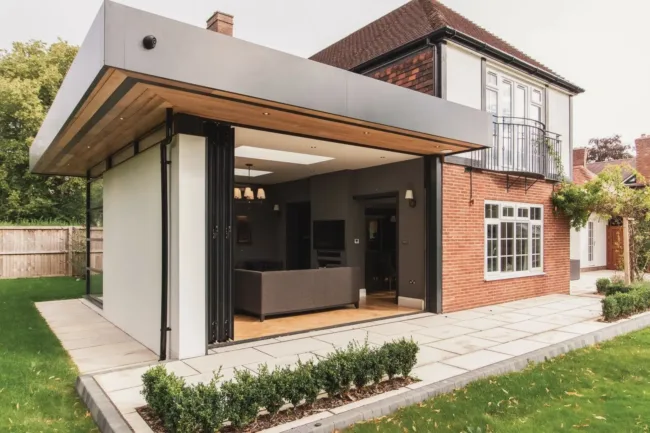
Expanding your home can be something special for you and you don’t necessarily have to move. One of the most frequently asked questions that homeowners want to know about is whether they could be allowed to construct a 3 metre house extension without planning permission. The shortest answer is a yes, but with conditions. In the UK there are Permitted Development rights which may greatly simplify the process. But before dreaming about what open-plan kitchens look or about sun-soaked garden rooms, some very important rules and limitations have to be mastered.
Is a 3 Metre House Extension Allowed Without Planning Permission?
From the existing regulations in the UK, you can usually build a 3 metre house extension without permission because of the permitted development rights. Such rules enable the minor construction work and alterations to be undertaken without the need of an application of full planning. For a single-storey rear extension, what you are able to extend from the original rear wall of a semi-detached or terraced house is typically to a maximum depth of 3 metres, and a maximum of 4 metres for a detached. These limits apply providing the project is otherwise compliant under permitted development.
Click to read more about the without planning permission 3 meter house extension.
It is important to remember that “original” means the structure as it stood on 1 July 1948 (or when it was first built if that date is later). Therefore, if the house already had an extension; it may have an effect on whether or not further work is permissible without government permission.
What Are Permitted Development Rights for Extensions?
Permitted Development Rights are basically a set of planning allowances made by the government in advance. They are intended to facilitate the relatively easy enhancement or addition to the value of property of the homeowner without the tedious process of seeking full planning permission.
To benefit from permitted development when doing a 3 metre house extension without planning permission the project must meet a set of criteria. Size restrictions, the materials used and proximity to boundaries are all included. For example, the materials used should be the same in look to the house already. In addition, the extension should cover no more than 50 %of the soil surrounding the original house.
In your home lies an area that is protected for example as a conservation area or national park or a listed building, the rights of permitted development can be restricted or nullified entirely. In this type of case a full planning application is typically needed, regardless of the size of the extension.
Rules for 3 Metre Rear Extensions on Semi-Detached Homes
For semi-detached and terraced houses a rear extension of up to 3 metres in depth is usually permissible without planning permission. However, the extension cannot be greater than 4 metres high if the necessary development must not exceed the permitted development.
Such an extension can have bi-fold doors, flat or pitched roofs, and structural changes within, provided that the rear depth is not greater than 3 metres. Although the extension is at the back of the house, you’ll still need to plan your property and neighbouring homes to ensure that you inhibit overshadowing or privacy problems.
Height Restrictions and Boundary Considerations
Whether it’s a 3 metre house extension with or without planning permission height and boundary conditions become a consideration. A Single Storey Extension cannot be over 4 metres high at the ridge and not exceed the existing roofline. If your extension is 2m or less from the boundary the eaves can not be above 3m. This guarantees that the extension is not disadvantageous to neighbouring property in terms of both light or outlook.
A flat roof, if you’re thinking about one, will also have to belong to the corresponding height range. Sloping roofs sometimes exhibit increased visual attractiveness.
Failure to conform to these measurements might provoke the event of a complete planning application or even compulsory action which could result in fines or even ordering for removal of the structure. It is always better to check the measurements twice and call on an expert before starting to build.
Do You Need to Notify the Council or Neighbours?
A 3 metre house extension without planning permission isn’t required to have formal approval, it’s wise however to inform your local council by following the Neighbour Consultation Scheme where applicable if your extension is between 3 and 6 metres for semi-detached houses (or more for detached). But for precisely 3 metres or less, such a process, generally, doesn’t have to be mandatory.
That being said, being a good neighbour is always a great return on investment. Even though it is not a legal requirement, notifying your neighbours beforehand could contribute to maintaining good relations and don’t cause disagreements between you and your neighbours. When you’re developing to the edge of one plot, think about the impact it might have on their light, privacy, or access.
Even in some cases, even permissible development projects may provoke concerns. A neighbour who feels your project exceeds the limits, can make a complaint to the local authority. The council can then investigate and if need be served a notice to stop the work pending proper permissions are granted.
When a Full Planning Application Becomes Necessary
There are times that your ambition may cross the line of what is permitted for permitted development. For such situations, you’ll be required to file a full planning application. This can happen if:
- You want it to reach further than 3 metres away from the back wall of a semi-detached house.
- Your property is located in a conservation area or it is listed.
- The extension fails height and boundary requirements.
- You’re using different materials that stand miles apart from the original home.
Submitting a full application requires you to submit architectural drawings, pay a fee and, at the very least, wait several weeks for a decision. On the other hand, if the proposal is reasonable and considerate to neighbouring properties, permission is usually obtained.
